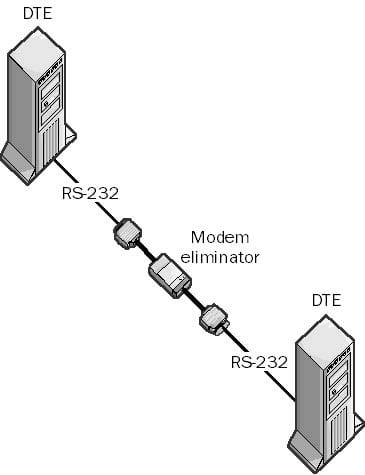In the heyday of synchronous data transmission, Modem Eliminators were indispensable for connecting two pieces of data terminal equipment (DTE) directly. These legacy devices bypassed the need for modems by providing essential timing signals and handshaking procedures. This article delves into what Modem Eliminators were, how they worked, and why they have fallen out of favor in the modern networking landscape.
What is a Modem Eliminator?
A Modem Eliminator is a device designed to enable the direct connection between two DTEs without the need for modems. These devices simulate a synchronous transmission data link by generating a clocking signal, effectively “eliminating” the need for a modem.

Technical Specifications
Modem eliminators provide speeds of up to 2.048 Mbps and are compatible with various cable types, including RS-232, RS-422/485, RS-530, V.25, and X.21. Unlike line drivers, which regenerate signals and extend distance, Modem Eliminators do not have this capability.
How Modem Eliminators Work
Clocking and Handshaking
Modem Eliminators provide the clocking signals needed for synchronous data transmission. They also facilitate handshaking, a protocol for initiating and terminating a communication session, allowing for efficient data transfer between DTEs.
Connectivity and Cabling
With support for multiple cable types, Modem Eliminators offer flexibility in connectivity. They are generally placed at the midpoint between the two devices being connected, making for a straightforward setup.
Line Drivers vs Modem Eliminators
Modem Eliminators are often confused with line drivers, but they serve different functions:
- Line Drivers: Connect DTE to data communications equipment (DCE) and regenerate signals, extending the maximum possible distance for communication.
- Modem Eliminators: Simply connect two pieces of DTE without the need for modems or signal regeneration.
Pairing and Midpoint Placement
While line drivers are used in pairs—one at each end of the line—modem eliminators are used singly and are generally placed at the midpoint between the two devices being connected.
The Historical Context
Rise and Fall
Modem Eliminators rose to prominence during the era of synchronous data transmission when modems were commonly used for connecting DTEs. However, with the advent of faster, more efficient networking solutions, they gradually lost their relevance.
Reasons for Decline
The main factors contributing to their decline are:
- High-speed Internet: Made modem-based connections obsolete.
- Advanced Networking Protocols: Provided built-in timing and handshaking.
Modern Alternatives
With the decline in the use of modems and synchronous data transmission technologies, the need for Modem Eliminators has largely disappeared. Modern networking solutions come with built-in capabilities for clocking, handshaking, and data transfer, negating the need for external devices like Modem Eliminators.
Conclusion
Modem Eliminators were once a cornerstone in the realm of synchronous data transmission, but their utility has waned in the face of technological advances. They remain an interesting footnote in the history of networking, a testament to the rapid pace of innovation in this field.